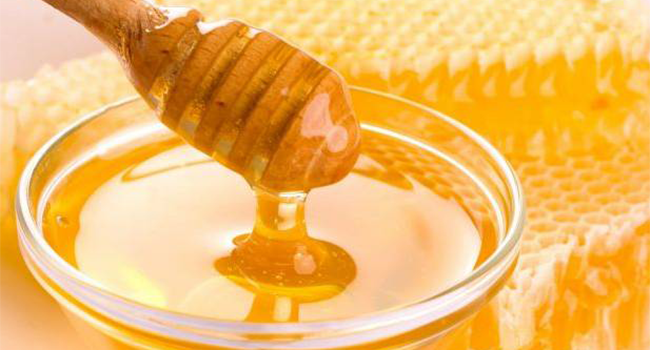Honey is a natural food of worldwide economic importance. Over the last decades, its potential for food, medical, cosmetical, and biotechnological applications has been widely explored. one among the most important issues of safety regarding such applications is its susceptibility to being contaminated with microorganism and fungi spores, as well as pathogenic ones, which can impose a hurdle to its consumption in a raw state. Another issue that produces this product significantly challenging depends on its high sugar content, which will result in the formation of hydroxymethylfurfural (HMF) when heated (due to Maillard reactions). Moreover, honey’s bioactivity is thought to be affected once it goes through thermal process because of its unstable and thermolabile elements. Therefore, proper food process methodologies are of utmost importance not only to make sure honey safety but also to supply a high-quality product with low content of HMF and preserved biological properties. As so, emerging food process technologies are utilized to enhance the protection and quality of raw honey.

Honey has been used as food and natural remedy since earlier period. Currently, honey consumption is continuously growing, primarily because of the increase within the world population and therefore the growing demand for natural and healthy products. Likewise, honey is used within the pharmaceutical and cosmetic industries, primarily because of its effectiveness in wound healing and burns.
Effect of Conventional Thermal Processing On Honey’s Quality
Thermal processing of food continues to be considered the best and most effective technique for preventing foods from microorganism spoilage. Within the honey industry, thermal processing is widely applied for the pasteurization. despite the fact that bacteria cannot reproduce in honey (due to low moisture, pH, water activity, and high acidity as well as different antibacterial components), they can be transmitted once honey is utilized as an ingredient in the preparation of different foods and multiply till they deteriorate the product.
Changes in the biological activity of honey after conventional thermal processing
During thermal processing, changes occurring in physicochemical quality indicators of honey (i.e., HMF and DA) are merely significant from compliance with national and international legal norms. However, from the nutritional point of view, the decrease of the biological activity during the thermal processing of honey is of particular importance because it may affect honey’s nutritional quality and health benefits.
Changes in antibacterial activity of honey
Due to the increased antibiotic resistance among pathogens, many infections become harder to treat as the antibiotics used to treat them become less effective.
High-pressure processing
High-pressure processing (HPP) is a nonthermal food pasteurization technique that uses elevated hydrostatic pressures for short periods to inactivate both spoilage and pathogenic vegetative microorganisms, as well as to inactivate some enzymes. As no heat is applied, most of the nutritional value remains unchanged, mainly by keeping thermolabile compounds on foods. HPP is reported to have little to no impact on microbial loads of foods with low water activity due to the protective effect of microorganisms, which can be surpassed by honey dilution.
Microwave
Microwaves consist of electromagnetic waves that fit in frequencies between 300 MHz and 30 GHz, corresponding to the region between infrared and radio frequencies in the electromagnetic spectrum. The feasibility of microwave heating relies on the food product’s moisture content, being more feasible for foods with high water content. Indeed, microwaves can penetrate the food product to a certain depth and interact with polar molecules (such as water), which are quickly heated due to the molecular friction generated by dipolar rotation in the presence of an alternating electric field.
Irradiation
This methodology consists of an in-package (or not) sterilization procedure, primarily when performed at higher doses, wherein ionizing radiation in the form of gamma-rays, X-rays, or electronic beams penetrates the food product and, consequently, microorganisms. The radiation then penetrates the cells and creates DNA dimers, which will hurdle vital cellular functions such as protein synthesis and DNA replication. It can also target the lipids from the membranes by oxidizing them. Irradiation is generally recognized as a safe practice to decontaminate food products.
Ultraviolet light
The effectiveness of pulsed UV light against Clostridium sporogenes endospores inoculated in clover honey, varying the number of the UV light pulses, treatment time, the distance between the UV light source and the honey, and the depth of honey. A reduction of 89.4% in endospore counts after 540 pulses for 180 s at a distance of 20 cm from the UV light source with a honey depth of 8 mm. It was also observed that the treatment time and the distance between the honey and the UV light source were the main parameters with more influence on endospore inactivation.
CONCLUSION
Honey processing is an important step once it comes to ensuring its quality and safety. Intense thermal processing can considerably change the nutritional values of this natural product. The utilization of (non)thermal emergent processing technologies for honey processing is a topic of interest, considering their capacity of preserving or even enhancing antioxidant and antimicrobial activity. although thermal emergent processing technologies permit a lot of homogenized and faster heat method, nonthermal processing technologies permit obtaining a lot of raw-liker food product, as most chemical changes induced by thermal processing (such as diastase and glucose oxidase inactivation, honey crystallization) don’t occur. In this sense, it’s possible to enhance the biological activities of honeys processed by nonthermal emergent technologies, considering the lower impact on phenolic compounds and enzymes.
